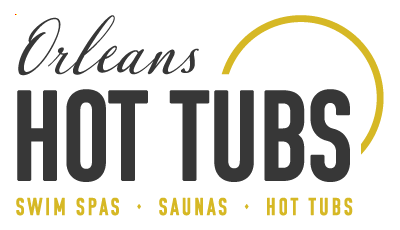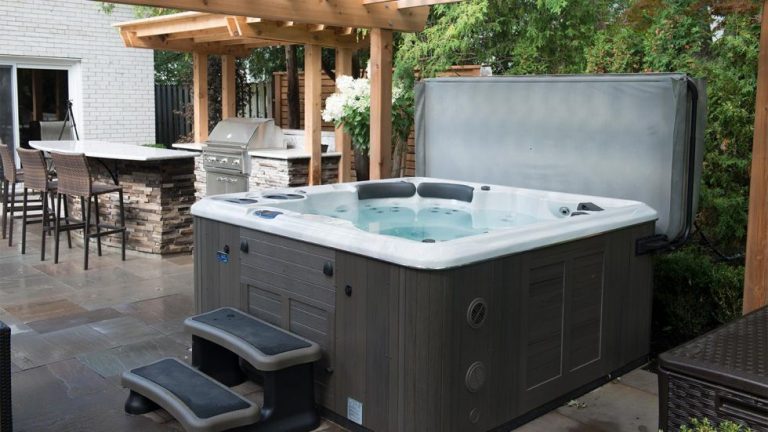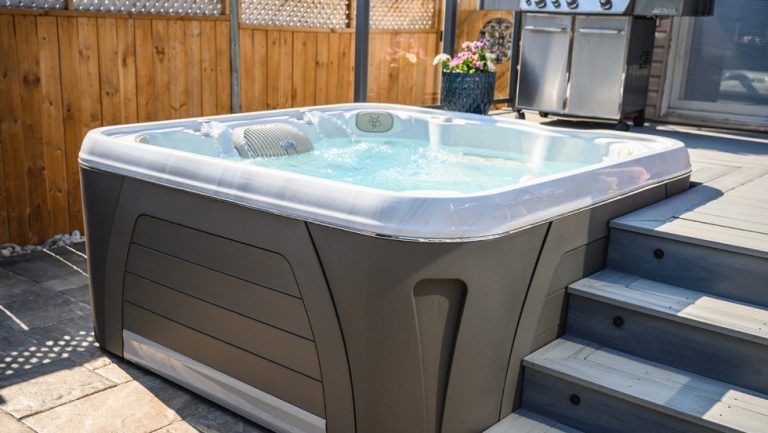When it comes to hot tubs, everyone seems to have an opinion. With so many differing opinions out there it can be hard to tell what to believe and what not to believe. Today, we thought we would help by busting a few of the most common hot tub myths that we have come across.
THE CHLORINE (OR BROMINE) IN THE WATER IS IRRITATING MY EYES
Our first hot tub myth is also probably the most common hot tubs misconceptions that we come across. Although chlorine and bromine can irritate your skin and eyes at very high levels, chances are your hot tub will rarely, if ever, reach those levels. If your eyes are bothering you either during or after hot tub use, the real reason is almost certainly that your pH is out of balance.
Your eyes have a pH level of around 7.5. The farther the pH of your hot tub water drifts from 7.5, the more irritating that water will be to your eyes.
To prevent eye irritation, test the pH and chlorine/bromine levels of your water 2-3 times per week with a home test kit. Adjust pH as necessary. If your pH is consistently out of balance, or if your chlorine/bromine level is very high, don’t use it. Instead, go to your local hot tub store and get your water professionally tested.
I DON’T NEED TO USE CHEMICALS BECAUSE I HAVE A UV / OZONE SYSTEM IN MY HOT TUB
This hot tub myth seems to have been started by some less than ethical salespeople looking to make some more sales. As with most myths, there is some truth to it, however. Both ozone and UV systems do help to remove bacteria from the hot tub water; reducing the amount of sanitizer (chlorine/bromine) that you will need. That said, neither system is even close to capable of effectively killing all of the bacteria in hot tub water. A chlorine or bromine based sanitizer is still needed to keep the hot tub water safe and bacteria free.
On top of that, neither UV nor ozone systems help to keep the water balanced. Regular water testing, and adding balancing chemicals, is still required whether or not you have one of these systems installed on your hot tub.
UV and ozone systems are great for maintaining water clarity. They also help reduce the amount of sanitizer you need to add to the water to keep it safe. They do not eliminate the need for chemicals, however.
THE BIGGER THE JET PUMPS, THE BETTER THE MASSAGE
This is another hot tub myth that is spread by some hot tub salespeople. The truth is that the horsepower rating of a hot tub pump really isn’t that useful when determining massage quality. This is because horsepower of a hot tub pump is simply a rating for how much energy it consumes and has nothing to do with actual water flow. For that reason, horsepower (often shortened to “HP”) is actually a better measurement for how much power the pump will consume. The bigger the pump, the more energy it uses to run!
To really get a sense of how powerful a pump is, try to find out its gallon per minute (GPM) rating. This is the measure of how much water the pump can actually move. Well designed pumps will move a lot of water with a relatively low horsepower rating. If you want to know how good the massage is, however, there’s more to it than just the size of the pump. You also need to look at the jets.
THE MORE JETS A HOT TUB HAS, THE BETTER ITS MASSAGE WILL BE
It is easy to see why this is one of the most common hot tub myths out there. It makes sense that a hot tub with more jets and more pumps will deliver a better massage than one with fewer jets and pumps. This isn’t always the case though.
Building a hot tub that delivers a great massage is very difficult. To do so requires maintaining a balance between the number of jets, the size of the jets and the water flow that the pumps produce. Every jet you add to a hot tub takes power away from the rest of the jets. Adding more jets than your pumps can handle leads to a severely underpowered massage. On the other hand, having too few will result in a painful, high-pressure massage.
The actual size of the jets also needs to be considered. Large jets are able to handle more water flow. This makes them suited for larger muscles and deep tissue massages. Smaller jets are able to deliver a more targeted massage, making them more suited to relieve pressure points. Having the right jets in the right spot is what makes for a great hot tub massage.
Jets aren’t the only piece of the puzzle, however. You also need to consider the pumps. Too much flow from the pumps can lead to high-pressure massages that can get irritating in a matter of a few minutes (think of a showerhead that has too much pressure). Too little flow from the pumps and the water will barely trickle out.
So how can you tell if a hot tub has a great massage or not? The only real way to tell is to book a wet test before you buy one. Trying out the hot tub before you buy is the only real way of knowing if the massage suits your needs.
Read More: Common Hot Tub Buying Mistakes
BLEACH CAN BE USED TO SANITIZE HOT TUB WATER
This hot tub myth seems to have originated from hot tub owners that wanted to find a way to reduce their chemical costs. As with the earlier myths that we covered, there is some truth to this myth as well. While bleach is effective at killing bacteria, do you really want to bathe in bleach? Not only is bleach harsh on your skin, it can also cause damage to:
- Your hot tub’s filters.
- The surface of the hot tub.
- The skin of the hot tub cover.
Adding bleach to your hot tub water will also completely throw off the balance of the water. This means that any money you saved in sanitizer is immediately wasted on balancing chemicals. Combine that with the added wear and tear on your hot tub and there is no real reason why anyone should use bleach to sanitize their hot tub.
HOT TUBS ARE INHERENTLY DIRTY AND REQUIRE CONSTANT CLEANING AND MAINTENANCE
Our last hot tub myth is that hot tubs are dirty, or that they require constant maintenance and cleaning in order for them to be safe to use. The truth is that hot tubs do require cleaning to stay clear and safe to use. Fortunately, the hot tub’s filtration system does almost all of the work for you. This myth seems to stem from people that were either disappointed after being sold on a “zero maintenance hot tub” or from hot tub owners that set their filtration times too low in an effort to save money.
When set up properly, your hot tub’s filtration system will ensure that the hot tub water remains clean by filtering the water around 2-3 times per day. All you have to do to maintain clean, safe water is to regularly add sanitizer to the water and clean off the filters every few weeks. Chemically cleaning your filter every 3-4 months will also help keep it running at peak efficiency, and can extend the life of the filter itself.
This doesn’t mean that all hot tubs require the same amount of maintenance, however. Some hot tubs, like the Self-Cleaning hot tubs by Hydropool, are able to clean all of the water in as little as 15 minutes! This means that they are able to clean the hot tub water more effectively and in less time. This not only saves you time and effort, it also saves you money as the filtration systems only need to run for part of the day.
No matter how good the filtration system is, however, all hot tubs do require a minimum amount of filtration time to properly clean the water. If yours can’t seem to stay clean, you are likely under this threshold. Consult your hot tub retailer to see how long your hot tub should run.




